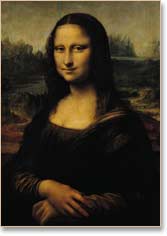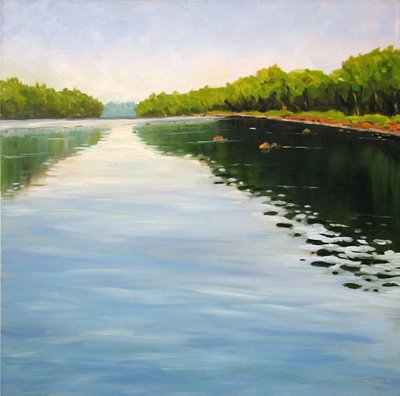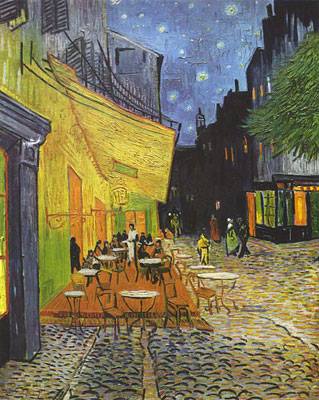Submitted by: ANTONIO, Khimsi Jane F.
The pen and ink drawing by Leonardo da Vinci, depicting a man fitting his body to a circle and a square by adjusting the position of his arms and legs, is probably the most famous drawing in the world – judging by the fact that I see it in advertisements and worked into logos for holistic health centers and it is even the wallpaper design for my Windows main page. However, few people know its name or the secrets that it contains. It is called Vitruvian Man.
Vitruvius was an ancient Roman architect who wrote a series of ten books on architecture – one of the few collections of books of its type that survived into the Renaissance. In the third volume, which is on the proportions of temples, he states that these buildings should be based on the proportions of man, because the human body is the model of perfection. He justifies this by stating that the human body with arms and legs extended fits into the perfect geometric forms, the circle, and the square.
This fragment of the philosophy of Pythagoras seized the imagination of the Renaissance. Many artists tried to illustrate this divine relationship, but with varying success. An illustration of Vitruvian man by Cesariano in his Cosmo Vitruvius of 1521 reeks of failure. Cesariano drew a perfect circle and square tangent to each other at the four points of the square; then he forced a figure of a man into the design so that his hands and feet touch the points. The result was one of the most disproportioned figures of the Renaissance, with arms too long, legs too short, and hands and feet too big. A system of relationships alone did not make beauty happen. It took the genius of Leonardo da Vinci to solve the problem. Leonardo started by drawing a perfectly proportioned man and then found the circle and square in the figure. The circle and square are only tangent at one place, the base. The thing that he added was beauty. I keep a copy of his illustration on the wall over my drawing table and refer to it as a guide for my own figures.
I believe that beauty in itself is a greater mystical revelation than any system of symbols or of correspondences. The one criticism I have of Tarot decks in general, modern or other, is that at times they lack beauty. Sometimes the creators make the same mistake as Cesariano and try to make reality fit their ideas instead of discovering them in reality. This is not to say that there is no underlying wisdom in their assertions, but only that at times their solutions are less than satisfactory.
I have lived with Leonardo’s Vitruvian Man for many years now and it has taught me many things. It has been like having Leonardo as a teacher. I would like to discuss this further and show how this relates to the Tarot.
Some of you will be asking yourself, why was it so important to the Renaissance artists and philosophers that a human body could fit into a circle and a square? Some of you probably know the answer, but I will go into it for the benefit of those who do not.
The ideas that Vitruvius was expressing can be traced back to Pythagoras. Pythagoras lived in a Greek colony in Southern Italy in the 6th century, BCE, the same time that Buddha lived. Like Buddha, Pythagoras taught his male and female disciples that life is an endless wheel of reincarnations until we purify ourselves and return to our divine source.
Purification included a vegetarian diet, moral behavior, and contemplation of the numerical abstractions that underlie reality. Pythagoras was the first person to call himself a philosopher, which means to love Sophia (wisdom). We have no writing that can be attributed to Pythagoras; yet, he is one of a handful of people that were instrumental in creating Western culture. It is theorized that if he did write anything it would have been poetry and he would have signed it Orpheus.
Orpheus, the mythical, semi-divine musician, was the founder of the first mystery cult, a religion based on a secret redemptive ritual. This religion is believed to be a major source for the Pythagorean teachings. Many of its followers were poets and musicians who believed that their inspiration came directly from Orpheus; hence, they would sign his name to their work.
In the Orphic creation myth, the beautiful god, Dionysus, is born of the incestuous union of Zeus and Persephone. Zeus’ wife, Hera, is jealous and wishes to destroy the child. To accomplish this she has her allies, the Titans, dismember and devour him. Of course, Zeus is heart broken and in a fit of anger, he burns the Titans to ash with a volley of lightning bolts. Only Dionysus’s heart remained, and from this, Zeus creates a new Dionysus. However, from the ash of the Titans mixed with the devoured Dionysus, the human race was born. Therefore, the human race is part divine and beautiful like Dionysus and part vicious and material like the Titans. The purpose of the Orphic mystery was to redeem the Dionystic soul and make it the dominant influence in the lives of the devotees.
The Orphics, like Pythagoras, saw a connection between music and numerical order. This type of reasoning lead to sacred geometry. Pythagoras taught that numbers had qualities as well as quantity and that geometric figures were powerful magical symbols. The circle, being connected to the dome of the sky and the cosmos with its spherical stars and planets continually circling the earth was a symbol of Dionysus, the soul.
The square, on the other hand, is the natural way that humans relate to the physical world. This is why there are four directions, four seasons, and four elements. It is why my house has four sides and I am sitting on a four-legged chair while I write this on my square keyboard and read it on my square screen. The square was a symbol of the Titanic human aspect.
The first step to the liberation of the soul is to recognize that we are made of both aspects. In Pythagorean thinking, if a human can be shown to fit into both symbols this would be a geometric proof of our dual nature. Many of these teachings were incorporated into alchemy, and other ancient disciplines. In this way, the teachings – although at times fragmented – were passed on to the Renaissance. In Venice around the year 1500, Leonardo once again demonstrated geometrically that the human soul is divine.
Article from: http://www.thealchemicalegg.com/VitruviusN.html
The author used mimetic way of approach on Leonardo’s artwork. Given that the subject of the artwork is a man, he discussed the proportion of the human body and how Da Vinci fit it inside geometric shapes. On the other hand, he also discussed the connection of human to the physical world which is represented by square, that there are always four sides, four directions, and four seasons. The circle, tangent at one side of the square, represents the infinity of human reincarnation.










